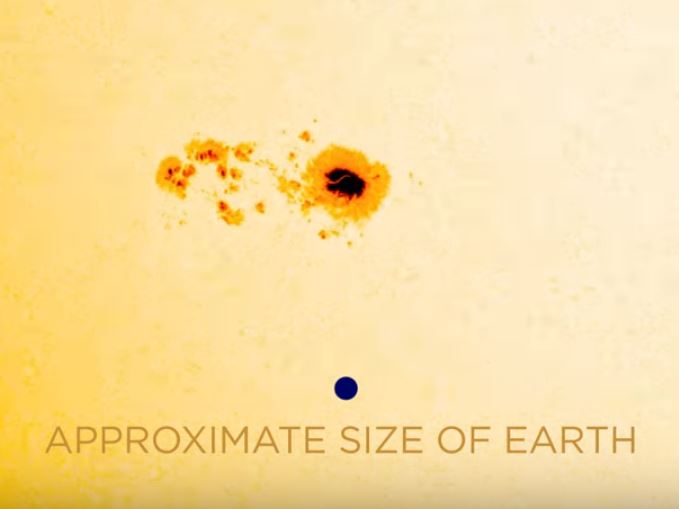Watch a Giant Sunspot Whirl Across the Sun in Incredible NASA Video
NASA's Solar Dynamics Observatory has captured a stunning view of a sunspot cascading from tail to core across the sun's surface.
As the sun moves into a several-year period of low solar activity, known as the solar minimum, there are fewer of these black blemishes. The word "sunspot" may suggest that the feature is diminutive, and the sun's massive size does dwarf the seemingly floating feature by comparison. But don't let the name mislead you: Sunspots are actually larger than Earth. [In Photos: Amazing Sunspots on Earth's Star]
The new video, shared by NASA yesterday (July 12), offers a model to grasp how distance can distort our comprehension of scale.
Sunspots are abundant when solar activity is high, and these spots will not become plentiful again until at least 2020, NASA officials said in a video caption. Because of the drop in solar activity, the sun was speckle-free for two days before this swirling sunspot appeared. The video was captured last week between about July 4 and July 11, according to NASA.
Follow Doris Elin Salazar on Twitter @salazar_elin. Follow us @Spacedotcom, Facebook and Google+. Original article on Space.com.
Breaking space news, the latest updates on rocket launches, skywatching events and more!

Doris is a science journalist and Space.com contributor. She received a B.A. in Sociology and Communications at Fordham University in New York City. Her first work was published in collaboration with London Mining Network, where her love of science writing was born. Her passion for astronomy started as a kid when she helped her sister build a model solar system in the Bronx. She got her first shot at astronomy writing as a Space.com editorial intern and continues to write about all things cosmic for the website. Doris has also written about microscopic plant life for Scientific American’s website and about whale calls for their print magazine. She has also written about ancient humans for Inverse, with stories ranging from how to recreate Pompeii’s cuisine to how to map the Polynesian expansion through genomics. She currently shares her home with two rabbits. Follow her on twitter at @salazar_elin.


